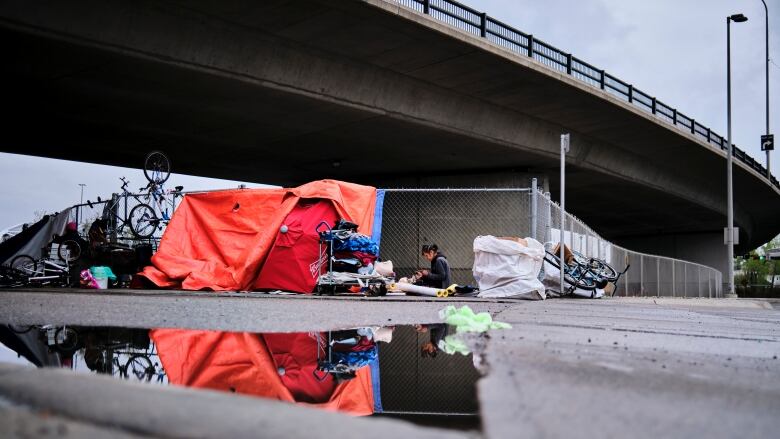More than 115,000 Calgarians are at high risk of homelessness, study finds
Co-author says governments should expand rental subsidy, income support programs

More than 115,000 Calgarians living in 40,000 households are at high risk of falling into homelessness, a new report published by the University of Calgary's School of Public Policy suggests, and one of the study's authors says governments could tap into "relatively inexpensive" supports to help.
The report focuses on Calgarians who have just enough income to keep a roof over their heads, despite doing everything they can to minimize costs.
"These are people who have already struggled. They have done whatever they can to keep their housing because they know that losing their housing results in very bad health outcomes," said co-author and economics professor Ron Kneebone, who worked alongside Margarita Wilkins.
Kneebone saidpeople in this situation are trying their best to hang on to housing like living in low-quality homes, crowding their family into a small space, relying on food banks and avoiding any unnecessary expenses.
"People at the highest risk of homelessness are those who have pursued, and perhaps exhausted, options for mitigating that risk," says the report.
Researchers used 2016 data to crunch the numbers because the latest 2020 census data was affected by the pandemic.
Kneebone saidgiven food inflation and other factors, the numbers are probably higher today.
How many currently housed people are at high risk of homelessness? Rita Wilkins and I estimate that in Calgary, approximately 115,000 adults and children living in 40,000 households face that risk. @VibrantCalgary @CAEHomelessness @policy_school https://t.co/zEI4r521wd pic.twitter.com/bnYaG75f23
—@RonKneebone"Both the federal and provincial government have been very focused on trying to rehouse people who have already lost their homes," said Kneebone.
"We think they should be paying more attention than they currently are to making sure that people never fall into homelessness in the first place."
'I skip meals all the time'
Samantha Adair, 31, knows the struggle all too well.
She works full time in sales and picked up two side gigs to pay rent. Still, she saidshe has minimal wiggle room in her budget and she's one emergency away from potentially losing her home.
"I skip meals all the time just to cut down on the cost of how much I have to spend," she said.
Adair used to live in subsidized housing before moving in with her partner, who helps cover bills when she's unable.
She saidshe often worries that she could end up on the street if her relationship ends. Although she would qualify for low-income housing again, Adair saidshe knows from experience that wait lists are months long.
"I shouldn't have to rely on someone else in order to have sustainable housing, but I feel like I do rely on my partner very much for that," she said.
"No one should have to live with this threat of not having their basic needs met every month housing, food, basic needs."
Better investment in rental subsidies, income support
The report says inadequate income supports and housing policies that leave rents too high relative to incomes are forcing Calgarians to make difficult choices.
"The good news about any of this is that we've also found that relatively inexpensive efforts by policymakers could pull a lot of these people back from the brink of homelessness," said Kneebone.
Kneebone saidbetter investment in rental subsidies and income support programs would make a big difference for the 40,000 households at risk of homelessness.
The study suggests that reducing rents by 10 per cent could decrease the at-risk population to around 84,170 people.
"These are not terribly expensive programs and they would have a really high rate of return in the sense that, if we can keep people in housing this saves the system a lot of money."
The long term solution? To build more housing that people with low income can afford, he said.












_(720p).jpg)


 OFFICIAL HD MUSIC VIDEO.jpg)
.jpg)



























































































